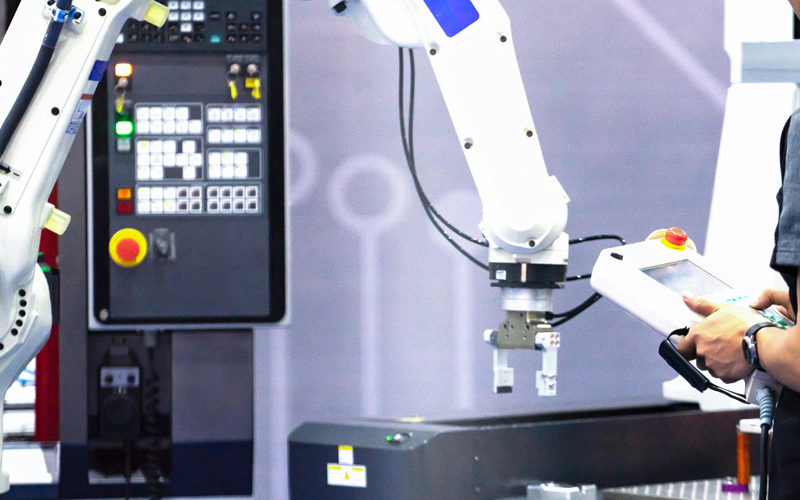Intelligent automation is transforming how businesses operate. In 2025, automation adoption is at an all-time high: 53% of companies have already implemented RPA, and that number is projected to reach over 70% within two years.
what is Intelligent automation (IA)?
Intelligent automation (IA) refers to advanced systems that combine AI technologies with automation tools to handle complex processes end-to-end with minimal human intervention. It blends techniques like machine learning, natural language processing, and computer vision with traditional automation (including RPA and workflow orchestration) to not only perform tasks but also learn and make decisions from data. By integrating AI into automation, organisations can streamline not just individual tasks but entire workflows, achieving end-to-end process optimisation and data-driven decision making.
what is RPA (Robotic Process Automation)?
RPA is a core component of intelligent automation – it uses software “robots” or digital workers to mimic human actions for executing repetitive, rule-based tasks across applications. Implemented well, RPA reduces errors, lowers labour costs, and speeds up processes. In fact, processes automated with RPA often see dramatically improved throughput times (50–60%) and labour cost reductions. It’s important to note that RPA is typically the starting point on the intelligent automation journey.
the lifecycle of an automation project
The lifecycle of an automation project ensures that solutions are robust, aligned with business needs, and sustainable. Most frameworks outline five key stages:
discovery – identifying opportunities
This phase analyses business processes to select suitable candidates for automation. Ideal processes are high-volume, rule-based, and prone to error. A Process Definition Document (PDD) captures every step in detail, forming the foundation for development.
design – planning the solution
Here, the automation team creates a Solution Design Document (SDD) mapping out the “to-be” process. This blueprint outlines workflow logic, error handling, integration needs, and governance standards. Alignment with business goals and ROI targets is essential.
development – building the bot
Developers configure workflows and scripts using RPA tools according to the SDD. Reusable components and interim reviews with SMEs help ensure quality and reduce build time.
testing – ensuring quality
Testing includes unit, integration, and end-to-end system tests. User Acceptance Testing (UAT) validates that the bot meets business requirements before production release.
deployment and maintenance – going live and sustaining value
After deployment, a hyper-care period ensures quick resolution of early issues. Continuous monitoring and updates keep automations aligned with evolving processes. KPIs such as transaction volumes, error rates, and ROI should be tracked regularly.
best practices for success
While technology forms the backbone of intelligent automation, the real drivers of long-term value are governance, alignment, and operational discipline. Following the lifecycle of an automation project with precision ensures solutions are robust, scalable, and deliver measurable ROI. To maximise the value of intelligent automation, leaders should:
establish a Centre of Excellence (CoE)
Implement governance frameworks, coding standards, and reusable component libraries. The CoE should own templates for PDD/SDD, enforce process eligibility criteria, and oversee compliance with security, access control, and audit requirements across all automation projects.
secure executive sponsorship
Gain C-suite advocacy early. Ensure leaders communicate the strategic value of automation, allocate budgets, and actively support change management initiatives to address workforce concerns and align automation priorities with long-term business objectives.
align with strategic goals
Use ROI models to prioritise processes impacting revenue, risk reduction, or compliance. Link automation KPIs (e.g., throughput, error reduction, cost savings) to corporate OKRs to keep programmes aligned and measurable.
start small, scale smart
Pilot low-complexity, high-volume processes to validate infrastructure, governance, and delivery methodology. Apply lessons learned to expand into cross-functional workflows and integrate AI components such as OCR or NLP for handling unstructured data.
robust process documentation
Capture processes at keystroke-level detail in PDDs to avoid ambiguity. Include exception handling logic, application dependencies, and credential management requirements to reduce build-time errors and rework.
technical readiness
Ensure infrastructure supports secure bot execution with appropriate VMs, orchestrators, credential vaults, and disaster recovery provisions. Preconfigure dev/test/prod environments to streamline deployments.
comprehensive testing
Apply multi-level QA: unit, integration, and performance testing, followed by UAT with SMEs. Test for unexpected pop-ups, system latency, and exception handling to avoid production failures.
continuous monitoring and optimisation
Deploy monitoring dashboards to track bot uptime, transaction success rates, and exception patterns. Schedule periodic reviews to update scripts for application changes, regulatory updates, or process improvements.
change management
Maintain structured change control to update automations in sync with evolving processes. Train business teams to manage exceptions and ensure operational readiness before and after deployment.
For decision-makers, the message is clear: Intelligent automation is no longer optional. Organisations that follow a structured lifecycle and embed best practices will turn automation from a cost-cutting tool into a driver of innovation and competitive advantage.
How can Infosys BPM support organisations in the pursuit of intelligent automation?
Infosys BPM empowers organisations pursuing intelligent automation by delivering end‑to‑end RPA solutions, from advisory and CoE setup through development, deployment, monitoring, and maintenance. The people‑process‑technology framework ensures near zero‑touch workflows, rapid ROI, enhanced productivity, and robust support across complex enterprise environments.







